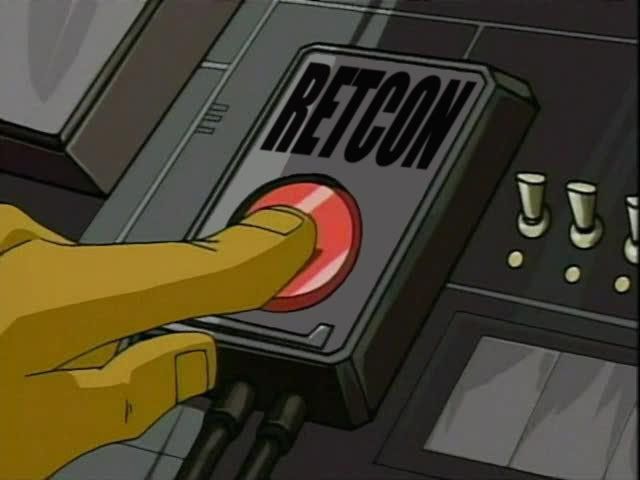The Multiversity Guidebook came out a couple of weeks ago, giving new information on the 52 Earths of the current DC Multiverse as envisioned by Grant Morrison. If you're reading Multiversity and inclined to skip this because it's just a guide book, you should reconsider as there is a bit of story there. Even if you haven't been reading Multiversity, but you're a fan of the DC multiverse you should check it out. Many of them were the old standbys we've seen since the earliest days of the Pre-Crisis Multiverse. Some are of much more recent vintage:
Earth-37
Apparent Concept: Earth Chaykin
Pictured: (left to right) Robin (Rickart Graustark), Batgirl (Barbara Gordon), Joker (Bianca Steeplechase), Star Hawkins, Tommy Tomorrow, Iron-Wolf.
Sources: Weird Worlds (1972) #8-10; Twilight #1-3 (1990) and presumably Ironwolf: Fires of Revolution (1999); Thrillkiller #1-3 (1997) and Thrillkiller '62 (1998), collected here.
Analogs: The world of Thrillkiller was designated as Pre-Crisis Earth-61 in Absolute Crisis on Infinite Earths (2006); Post-52, Thrillkiller characters were shown as being on Earth-37 in Countdown: Arena #1 (February 2008).
Comments: Twilight was a re-imagining or Watchmen-izing of a number of DC's future nonsupers characters. It's unclear if the non-Twilight versions exist anywhere in the current Multiverse. Chaykin created Ironwolf in Weird Worlds and he gets referenced in Twilight, though never seen. We can assume he would be a different version.Then, years later, John Francis Moore and Chaykin wrote an Ironwolf graphic novel that altered his world a bit and represented some of the events of the Weird Worlds stories. The graphic novel is clearly intended to be in the world of Twilight, but it doesn't seem to jibe with the off-hand references to Ironwolf in that story! Ironwolf as pictured above looks like he did in his original 70s appearances, for what its worth.
1 hour ago

%2B001-049-Earth-37.jpg)

















